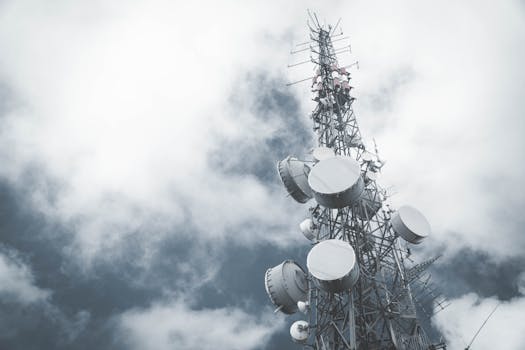The New Frontier: Exploring the Latest Trends in Satellite Communication

The New Frontier: Exploring the Latest Trends in Satellite Communication
Satellite communication is an essential part of modern life, enabling global connectivity and facilitating communication across the globe. The latest trends in satellite communication are revolutionizing the way we connect and communicate, with advancements in technology making it more efficient, reliable, and accessible. In this article, we will explore the new frontier of satellite communication, discussing the latest developments and innovations that are shaping the industry.
Introduction to Satellite Communication
Satellite communication involves the use of artificial satellites to transmit and receive data, voice, and video signals. Satellites are launched into orbit around the Earth, where they can receive and retransmit signals to and from different locations on the planet. This technology has been around for several decades, but recent advancements have significantly improved its capabilities and applications.
Satellite communication is used in a variety of fields, including telecommunications, navigation, weather forecasting, and remote sensing. It is particularly useful in areas where traditional communication infrastructure is limited or non-existent, such as in remote or rural areas. With the increasing demand for global connectivity, satellite communication is playing an increasingly important role in bridging the digital divide.
Latest Trends in Satellite Communication
There are several latest trends in satellite communication that are transforming the industry. One of the most significant trends is the development of high-throughput satellites (HTS), which offer faster data speeds and greater connectivity. HTS satellites use advanced technologies such as spot beams and frequency reuse to increase capacity and reduce costs.
Another trend is the growth of low-Earth orbit (LEO) satellites, which operate at lower altitudes than traditional geostationary satellites. LEO satellites offer several advantages, including lower latency, higher data speeds, and improved security. Companies such as SpaceX and OneWeb are launching constellations of LEO satellites to provide global internet connectivity.
The use of artificial intelligence (AI) and machine learning (ML) is also becoming more prevalent in satellite communication. AI and ML can be used to optimize satellite operations, improve data analysis, and enhance cybersecurity. For example, AI-powered systems can detect and respond to cyber threats in real-time, reducing the risk of data breaches and other security incidents.
Applications of Satellite Communication
Satellite communication has a wide range of applications, from telecommunications and navigation to weather forecasting and remote sensing. In the field of telecommunications, satellite communication is used to provide internet connectivity, voice and video services, and data transmission. Satellites are also used for navigation, providing location information and timing signals for GPS and other navigation systems.
Satellite communication is also used in weather forecasting, providing images and data on weather patterns and climate trends. Remote sensing is another important application, where satellites are used to collect data on the environment, including land use, ocean health, and natural resource management.
In addition to these applications, satellite communication is also being used in emerging fields such as Internet of Things (IoT) and 5G networks. IoT involves the use of sensors and other devices to collect and transmit data, while 5G networks require high-speed, low-latency connectivity to support applications such as augmented and virtual reality.
Conclusion
In conclusion, the latest trends in satellite communication are transforming the industry and enabling new applications and services. With advancements in technology, satellite communication is becoming more efficient, reliable, and accessible. As the demand for global connectivity continues to grow, satellite communication will play an increasingly important role in bridging the digital divide and enabling new technologies and applications.




